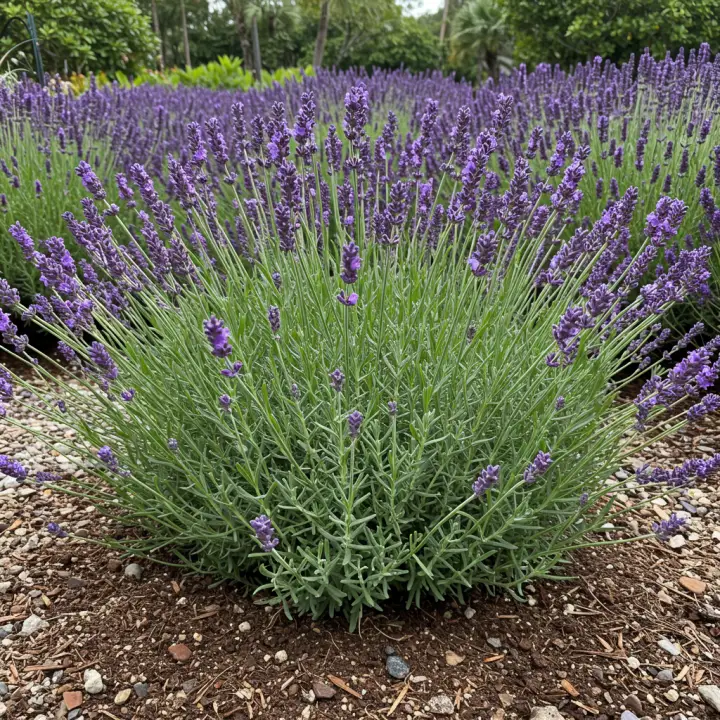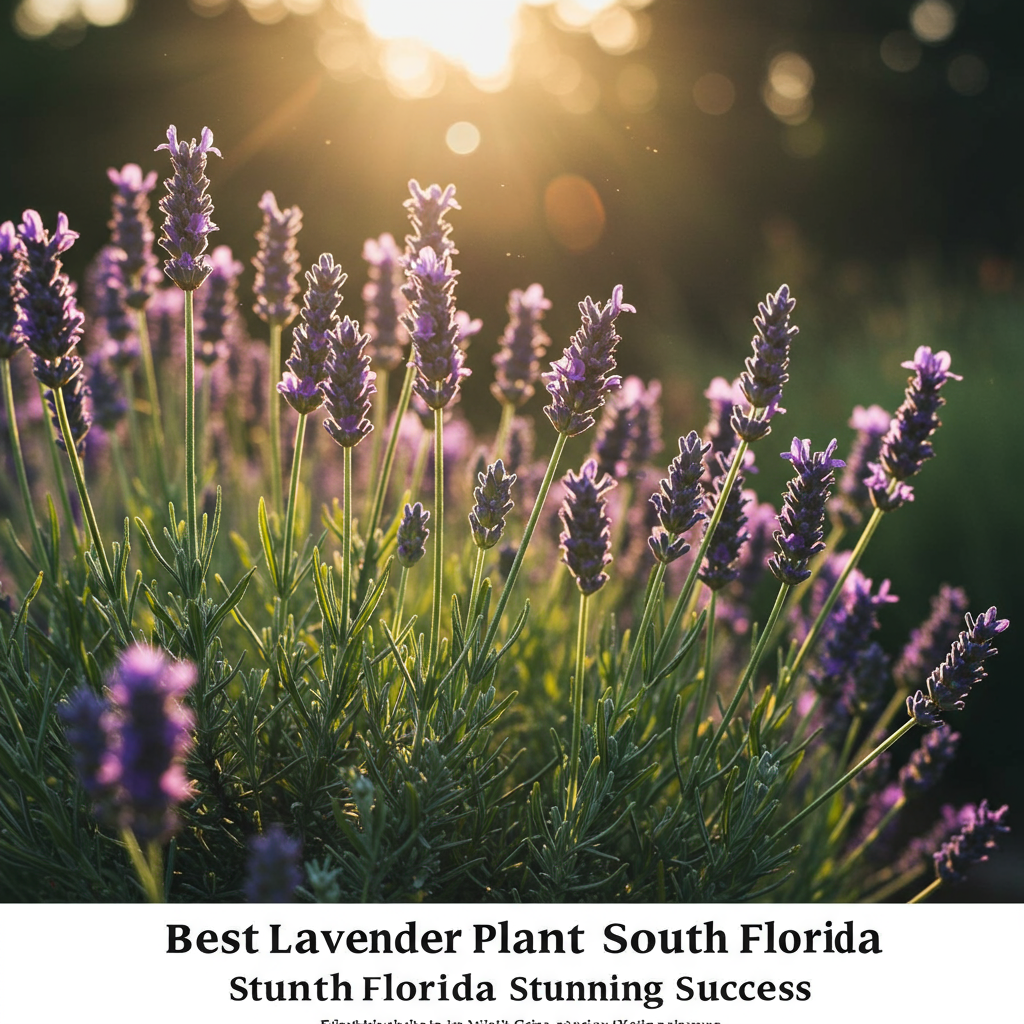Struggling to grow lavender in the Sunshine State? This guide reveals the Best Lavender Plant South Florida can cultivate, offering expert tips for stunning success, even in our challenging climate. Learn about top heat-tolerant varieties and essential care strategies to enjoy fragrant blooms in your backyard.

South Florida’s unique climate – a symphony of intense heat, high humidity, and often sandy soils – presents a formidable challenge for many temperate plants, including the beloved lavender. Gardeners often dream of transforming their yards into fragrant, purple havens, only to face disappointment. But what if we told you it’s not only possible but achievable with the right knowledge and plant choices? This post will unlock the secrets to cultivating beautiful, thriving lavender plants right here in your South Florida garden.
The Challenge of Cultivating Lavender in Tropical Climates
Traditional lavender varieties, such as English (Lavandula angustifolia) and French (Lavandula stoechas), absolutely adore cool, dry climates with well-drained, lean soil. South Florida offers the exact opposite: sweltering heat, relentless humidity that promotes fungal diseases, and often heavy, moisture-retaining soils that lead to root rot. However, specific resilient hybrids have emerged, bred to withstand more challenging conditions, making them ideal candidates for your South Florida landscape.
Unveiling the Best Lavender Varieties for South Florida
While no lavender variety will truly thrive through a South Florida summer like it would in Provence, several cultivars demonstrate remarkable resilience and offer the best chance for success. These are often hybrids that cope better with heat and humidity.
‘Goodwin Creek Grey’ Lavender: A Top Performer
Often cited as one of the most heat-tolerant lavenders available, ‘Goodwin Creek Grey’ (Lavandula x heterophylla) is a go-to choice for South Florida gardeners.
Why it works: This hybrid boasts a high tolerance for heat and humidity. Its silvery-grey foliage and long, elegant flower spikes of deep violet-blue offer a classic lavender look.
Characteristics: Grows vigorously, reaching 2-3 feet tall and wide, with a strongly aromatic scent. It tends to be more disease-resistant in humid conditions than other varieties.
‘Phenomenal’ Lavender: Robust and Resilient
‘Phenomenal’ (Lavandula x intermedia ‘Niko’) lives up to its name, offering exceptional hardiness and adaptability. It’s an Intermedia (Lavandin) type known for its strong fragrance and robust growth.
Why it works: Developed to thrive in diverse climates, ‘Phenomenal’ shows excellent resistance to root rot and heat stress. Its sturdy stems and vigorous growth make it a standout choice.
Characteristics: Features silvery foliage and abundant, fragrant deep purple flower spikes. It can grow up to 3 feet tall and wide, providing a substantial presence in the garden.
‘Sweet Lavender’ (Lavandula heterophylla): Surprisingly Adaptable
Also known as Lavandula heterophylla, ‘Sweet Lavender’ is another hybrid that performs surprisingly well in warmer climates.
Why it works: This variety tolerates higher humidity and heat better than many pure species. It offers a softer, more subtle fragrance, appealing to those who find traditional lavender too intense.
Characteristics: Features slightly broader, greener leaves and produces delicate, long-stemmed lavender-purple flowers almost year-round in ideal conditions. It can grow quite large, up to 4 feet tall and wide.
Essential Growing Tips for Lavender in South Florida
Even with the right variety, success hinges on meticulous care tailored to South Florida’s unique environment.
Sunlight: The Golden Rule (with a Florida Twist)
Lavender needs at least 6-8 hours of direct sunlight daily. In South Florida, however, the intense afternoon sun can be scorching.
Recommendation: Plant in a spot that receives full morning sun and potentially some dappled shade or protection from the most intense afternoon rays, especially during the peak summer months.
Soil Preparation: Drainage is Key
This is the single most critical factor for lavender survival in humid climates. Lavender hates “wet feet.”
Raised Beds or Containers: Both are highly recommended to ensure superior drainage.
Soil Mix: Use a highly porous, well-draining potting or garden mix. Amend heavily with coarse sand, perlite, or small gravel to improve drainage. Add some lime or mushroom compost to raise the pH slightly, as lavender prefers neutral to slightly alkaline soil (pH 6.5-7.5).
Watering Wisdom: Less is More
Overwatering is the quickest way to kill lavender in South Florida.
Establishment: Water regularly (daily to every other day) during the first few weeks after planting until the plant is established.
Mature Plants: Once established, greatly reduce watering. Allow the soil to dry out completely between waterings. Stick your finger an inch or two into the soil; if it’s dry, it’s time to water. Err on the side of underwatering.
Pruning for Prolific Blooms
Regular pruning encourages bushier growth and more flowers.
After Bloom: Once a flowering cycle finishes, cut back the flower stalks and about 1/3 of the foliage to encourage new growth and a fresh flush of blooms.
Annual Haircut: In late winter/early spring, give your plant a more significant trim, removing any woody, unproductive growth. Avoid cutting into the old, woody base of the plant, as it may not recover.
Fertilization: A Light Touch
Lavender is not a heavy feeder and prefers lean soil.
Minimal Needs: If your soil is well-amended, you might not need to fertilize at all.
When to Fertilize: If you do, use a very mild, balanced slow-release fertilizer (low nitrogen is crucial) in spring, or a liquid feed at half strength after pruning. Too much nitrogen will produce lush foliage but fewer flowers and can make the plant more susceptible to fungal issues.
Pest and Disease Management
While generally hardy, humidity can invite issues.
Fungal Issues: Keep an eye out for powdery mildew or other fungal spots, especially during prolonged wet periods. Ensure good air circulation around plants.
Pests: Lavender is relatively pest-free due to its strong scent, but occasionally aphids or whiteflies might appear. Use organic pest control methods if necessary.
Achieving Stunning Success: Beyond the Basics
To truly achieve stunning success with your South Florida lavender, consider these advanced tips:
Air Circulation: Ensure good air movement around your lavender plants to combat humidity. Avoid planting them too close to other dense foliage.
Mulch Wisely: If using mulch, choose inorganic options like gravel or small pebbles. Organic mulches (like wood chips) can retain too much moisture and promote fungal growth around the plant’s base.
Container Gardening: This offers excellent control over soil conditions and watering. Use terracotta pots, which allow for better airflow and evaporation than plastic.
Frequently Asked Questions About Growing Lavender in South Florida
Q1: Can I really grow lavender in South Florida?
Yes, with the right variety (like ‘Goodwin Creek Grey’ or ‘Phenomenal’) and specific care, it is possible, though it requires more attention than in cooler climates.
Q2: What’s the best time to plant lavender in South Florida?
The cooler, drier months of late fall, winter, or early spring (October to March) are ideal for planting. This allows the plant to establish before the intense summer heat and humidity arrive.
Q3: How often should I water my lavender in South Florida?
Once established, water sparingly. Allow the soil to dry out completely between waterings. This might mean watering only once every 7-14 days, depending on rainfall and heat. Overwatering is the most common cause of failure.
Q4: Why is my lavender dying or turning yellow?
Yellowing leaves often indicate overwatering or poor drainage leading to root rot. It can also signify nutrient deficiency (less common with proper soil) or too much nitrogen. Assess your watering habits and soil conditions first.
Q5: Are there any lavender-scented alternatives that thrive here?
Absolutely! If you find lavender too challenging, consider Florida-friendly ‘lavender-like’ plants such as:
Russian Sage (Perovskia atriplicifolia): Drought-tolerant with silvery foliage and lavender-blue flowers.
Butterfly Bush (Buddleja davidii): Many varieties have purple flowers and attract pollinators.
* Anise Hyssop (Agastache foeniculum): Aromatic leaves and spires of purple flowers, attracts hummingbirds and butterflies.
Conclusion: Embrace the Challenge, Reap the Reward
Growing the Best Lavender Plant South Florida has to offer is a rewarding endeavor that can add beauty, fragrance, and a touch of Mediterranean charm to your tropical garden. By selecting heat-tolerant varieties like ‘Goodwin Creek Grey’ or ‘Phenomenal,’ prioritizing excellent drainage, practicing mindful watering, and prudent pruning, you can achieve stunning success. Don’t let your South Florida address deter you from enjoying the timeless allure of lavender – embrace the challenge, and your garden will thank you with its fragrant, purple splendor.

